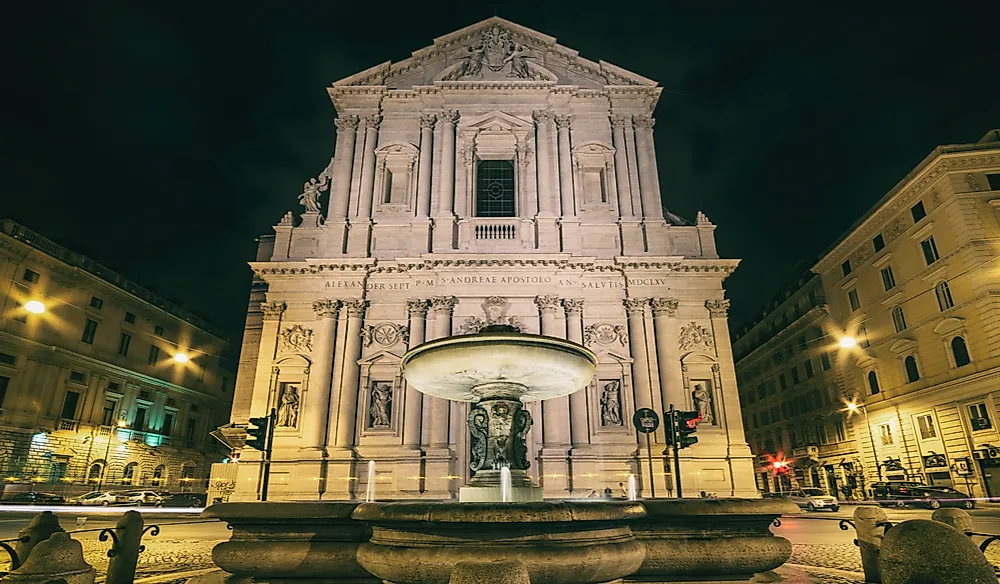Architectural Buildings of the World: Sant'Andrea della Valle

Located in Piazza Vidoni, Rome, Italy, the Church of St. Andrew of the Valley (Sant'Andrea della Valle) stands proud of its rich heritage that can be traced back to the sixteenth century when it was first built. The design employed in constructing the building is inspired by the Renaissance Period, and it served as the seat of the Theatines, a religious order of the Catholic Church. The construction of this building was not an easy endeavor; the project took about sixty years to complete from the groundbreaking to the consecration ceremony.
Construction
The necessity for this magnificent building came from the need to construct a bigger church for the Theatine head. The Duchess of Amalfi donated the nearby church of San-Sebastiano and her comfortable palace in Central Rome for building the new church that would serve as the headquarters. Architects Giacomo and Paolo Olivieri were initially tasked with bringing the blueprints for the new building to reality. Construction started in 1590 but was halted after the death of Cardinal Gesualdo. In 1608 work resumed under a new patron alongside funding and improved design by Carlo Maderno.
Papal Influence
The influence of the papacy is evident when the designs of the church building and the patrons tasked with leading the church are put into focus. After Cardinal Gesualdo died, his role was passed to Cardinal Alessandro who was the nephew to Pope Sixtus V. The dome’s design also borrowed heavily from the Holy Basilica and was designed by Lanfranco in collaboration with Domenichino. Cardinal Allesandro chose both designers, and they completed the dome in 1627, making it the third largest in Rome.
Chapels and Additions
After its consecration in 1650, chapels were added later on in 1670 by new designers. The Ginetti chapel, designed by Carlo Fontana, was built on the right side of the church. The chapel got its name from Cardinal Giovanni Ginetti who died in 1691 and was buried there. Other chapels on this side are Strozzi chapel (1616), Our Lady of Sacred Heart, and Saint Avellino chapel, and Crucifix chapel (1647). Each of the chapels is unique either due to the designer involved, like Michelangelo in the design of the Strozzi chapel, or the statues and artifacts in them.
On the left side of the Sant Andreas building, there are several famous chapels; the Madonna Della Purita chapel, the tomb of the Cardinal Stoppani chapel, St Sebastien chapel, Rucellai chapel, and the Capella Barberini chapel. Like those on the right, the chapels bear statues, altars, and artifacts that document their history. The Madonna Della Purita chapel is a good example because it is connected to the holy family and has the tomb of Saint Fortunatus, who was a martyr and the chapel was consecrated in 1725.
Other Notable Structures
Decorations made by Alessandro Algardi and Carlo Rainaldi on the walls of the apse and façade are impressive since they have drawings of the martyrdom, crucifixion, and the burial of Sant Andrea. Donna Olimpia Maidalchini, who was the sister-in-law of Pope Innocent X, commissioned them. The pipe organ, which was built in 1845, is still in use to date.











